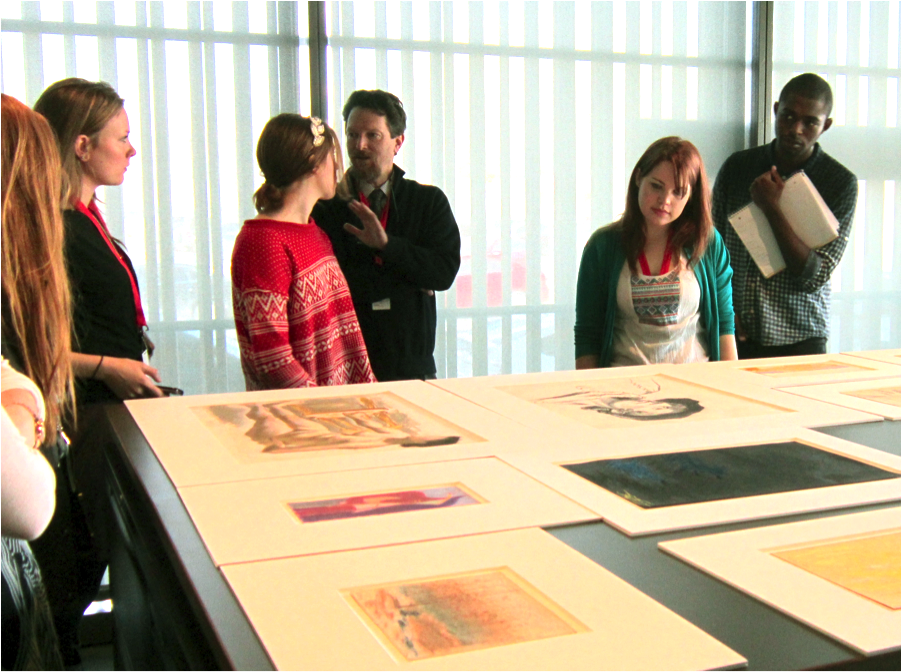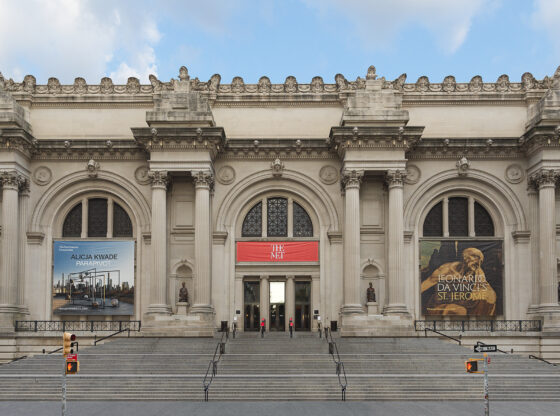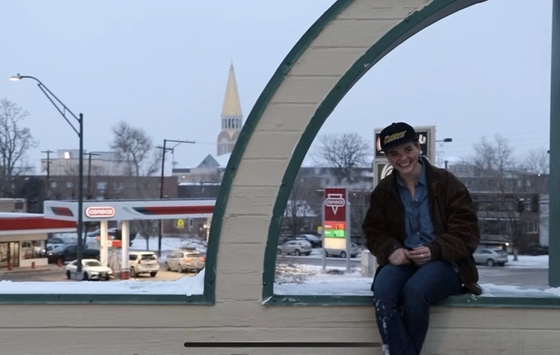“The best works are often those with the fewest and simplest elements… until you look at them a little more, and things start to happen,” explained famed Abstract Expressionist Clyfford Still.
Curatorial Practicum students and Professor Dan Jacobs, director of DU’s Myhren Gallery, hosted a reception at the Clyfford Still Museum located in the heart of the Civic Center last week. The reception was in celebration of curating artworks that go through the gallery rotation by adding student-written wall panels next to each piece. The gallery opening was complete with a bar and free admission for anyone affiliated with the DU community, but it also drew in locals with no connection to the university.
This upper-level art history class, Curatorial Practicum, is an exploration on museum and gallery practices with a focus on learning how to curate a museum or gallery. Much of the class work is on-site and hands-on to become more familiar with the space. Students choose particular works to put on display in specific parts of the gallery and, after much research, make decisions about the placement of each work and its proximity to others. According to the Clyfford Still Museum’s website, many of the works chosen by students had never before been exhibited. Another important portion of the class is the concise writing of wall panels. Each of these bear the initials of the student responsible for compiling the information about the piece in question.
DU senior from Winnetka, Ill. Natalie Roche, enjoyed the event and the hands-on curatorial practice completely.
“After reading Still’s diary, reviewing articles, and perusing his writings, students made connections to his artwork that went beyond his literature,” said Roche.
Roche is among the students that worked on curating the gallery and is an Art History major with an Asian Studies minor. She was the only student who read Still’s diary and was able to incorporate knowledge of his personality into her analyses of his works. She loved the experience of being able to work on-site and have the opportunity to apply the skills she has learned in a professional setting.
These wall panels’ purpose is to be informative and assist in viewers’ understanding of Still’s extensive collection of art, much of which is considered Abstract Expressionism.
According to the Clyfford Still Museum’s website, Abstract Expressionism is marked by the painting of abstract forms, expressive brushwork and monumental scale, all of which were used to convey universal themes about creation, life, struggle and death. These themes were collectively known as “the human condition,” a phrase that took on a substantial relevance during and after World War II. Clyfford Still is widely considered as one of the most important and renowned first-generation American Abstract Expressionists.
Still’s collection ranges from gigantic minimalistic canvases spanning over 10-by-14 feet to highly abstracted and unnaturally tall figural to realistic portraits, and according to the museum, rare drawings and illustrations. Roche was highly intrigued by Still’s drawings in particular, especially one that is thought to be a self-portrait of the artist crossdressing. Roche was also interested in the artist’s use of impasto, a thick application of paint that makes no attempt to look smooth, defined by About: Art History.
After the artist’s death in 1980, his estate was sealed off from public and scholarly view. Still wanted all of his artwork to be in one city in a single museum. Denver, under the leadership of then Mayor John W. Hickenlooper, was selected by Still’s wife, Patricia, to receive the substantial Still collection, as reads Still’s profile. The resulting two-story, 28,500-square-foot building was designed by Brad Cloepfil of Allied Works Architecture specifically to display Still’s various work.
The Clyfford Still Museum is a modernist two-story building with a textured concrete façade with industrial walls and skylights adding natural light to the galleries. In addition to the natural lighting, warm lights, which cast a yellow rather than a white glow, draw attention to the paintings by illuminating them. The minimalistic layout of the museum ensures that the viewer’s attention is based on the artworks themselves and their corresponding wall panels without distraction. According to the museum’s website, viewers can also take breaks in between galleries to walking out onto one of the two outdoor terraces on the second floor which house vibrant greenery. These organic spaces serve as a break from the urban interior of the museum. The galleries are very open and airy with wide doorways leading into the adjacent galleries and lofts that open up to view the lower floor where the reception was held.
As stated in their blog, the Clyfford Still Museum was thrilled to be working with DU students. The exciting involvement of DU voices in one of Denver’s newest museums is a testament to the growing contributions of students to the city’s public sphere, as well as the rising popularity of an artist long forgotten. The Clyfford Still Museum is worth a visit to see not only a rare collection of Abstract Expressionist art, but also to support DU students’ hard work.











